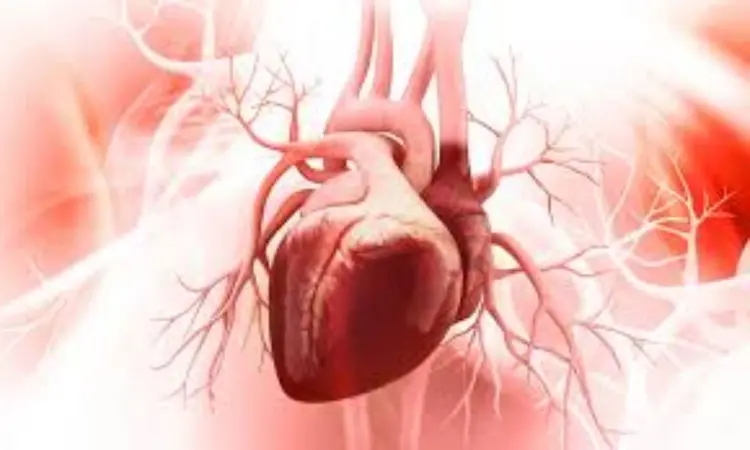- Home
- Medical news & Guidelines
- Anesthesiology
- Cardiology and CTVS
- Critical Care
- Dentistry
- Dermatology
- Diabetes and Endocrinology
- ENT
- Gastroenterology
- Medicine
- Nephrology
- Neurology
- Obstretics-Gynaecology
- Oncology
- Ophthalmology
- Orthopaedics
- Pediatrics-Neonatology
- Psychiatry
- Pulmonology
- Radiology
- Surgery
- Urology
- Laboratory Medicine
- Diet
- Nursing
- Paramedical
- Physiotherapy
- Health news
- Fact Check
- Bone Health Fact Check
- Brain Health Fact Check
- Cancer Related Fact Check
- Child Care Fact Check
- Dental and oral health fact check
- Diabetes and metabolic health fact check
- Diet and Nutrition Fact Check
- Eye and ENT Care Fact Check
- Fitness fact check
- Gut health fact check
- Heart health fact check
- Kidney health fact check
- Medical education fact check
- Men's health fact check
- Respiratory fact check
- Skin and hair care fact check
- Vaccine and Immunization fact check
- Women's health fact check
- AYUSH
- State News
- Andaman and Nicobar Islands
- Andhra Pradesh
- Arunachal Pradesh
- Assam
- Bihar
- Chandigarh
- Chattisgarh
- Dadra and Nagar Haveli
- Daman and Diu
- Delhi
- Goa
- Gujarat
- Haryana
- Himachal Pradesh
- Jammu & Kashmir
- Jharkhand
- Karnataka
- Kerala
- Ladakh
- Lakshadweep
- Madhya Pradesh
- Maharashtra
- Manipur
- Meghalaya
- Mizoram
- Nagaland
- Odisha
- Puducherry
- Punjab
- Rajasthan
- Sikkim
- Tamil Nadu
- Telangana
- Tripura
- Uttar Pradesh
- Uttrakhand
- West Bengal
- Medical Education
- Industry
Triple Combo therapy not likely to benefit heart failure patients with preserved HF: Circulation

USA: The combined benefits of an angiotensin receptor-neprilysin inhibitor (ARNI), a mineralocorticoid receptor antagonist (MRA), and a sodium-glucose cotransporter 2 (SGLT2) inhibitor in mildly reduced ejection fraction (EF) patients are likely "substantial" and same to that seen in reduced EFs patients, says a recent study.
The study, published in the journal Circulation is a cross-trial analysis of the TOPCAT, PARAGON-HF, and EMPEROR-Preserved trials. The findings were also presented at the European Society of Cardiology Heart Failure (ESC-HF) 2022 congress by Muthiah Vaduganathan, Brigham and Women's Hospital, Boston, MA.
According to Dr. Vaduganathan, in patients with EFs over 65%, where these drugs in combination are likely not to be of benefit. The findings support recent calls for reevaluating heart failure nomenclature and the upper LVEF bounds to define heart failure with mid-range ejection fraction.
The current guidelines define that middle range as between 40% and 50%, but these data do put questions of whether that should be extended upwards to 60% or 65%, with the idea that really most patients with heart failure likely benefit from a combination.
In heart failure with reduced ejection fraction that's below or equal to 40%, there are clear and very substantial benefits of combination medical therapy, but the researchers actually found benefits almost of a comparable magnitude of benefit with this combination of therapies, up to a range between 60% and 65%.
For the study, the researchers analyzed the combined trial data according to three LVEF subgroups: 45% to 54%, 55% to 64%, and 65% or greater, constructing composite splines to describe variations in treatment benefits across the EF spectrum.
Key findings of the study include:
- Switching from a renin-angiotensin-aldosterone-system (RAAS) inhibitor to an ARNI, adding an MRA, and then adding an SGLT2 inhibitor would cut the risk of a cardiovascular death or hospitalization by half (HR 0.49) in patients with a LVEF in the range of 45% to 54%.
- For those with LVEFs in the range of 55% to 64%, the reduction in this composite endpoint was almost equally powerful (HR 0.54).
- In patients in the LVEF ≥ 65% range, however, no benefit was seen with combination therapy (HR 1.17).
Reference:
Vaduganathan M, Claggett BL, Inciardi RM, Fonarow GC, McMurray JJV, Solomon SD. Estimating the Benefits of Combination Medical Therapy in Heart Failure with Mildly Reduced and Preserved Ejection Fraction. Circulation. 2022 May 23. doi: 10.1161/CIRCULATIONAHA.121.058929. Epub ahead of print. PMID: 35603667.
Dr Kamal Kant Kohli-MBBS, DTCD- a chest specialist with more than 30 years of practice and a flair for writing clinical articles, Dr Kamal Kant Kohli joined Medical Dialogues as a Chief Editor of Medical News. Besides writing articles, as an editor, he proofreads and verifies all the medical content published on Medical Dialogues including those coming from journals, studies,medical conferences,guidelines etc. Email: drkohli@medicaldialogues.in. Contact no. 011-43720751


